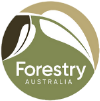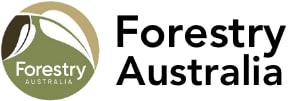
IFA/AFG fells myths on native forest harvesting
MEDIA RELEASE
8 April 2020
The peak organisation representing some 1,000 professional and scientific forest land managers and growers have released a position paper outlining the raft of socio-economic and environmental values active native forest management provides to Australia.
Institute of Foresters of Australia and Australian Forest Growers (IFA/AFG) President, Bob Gordon said the IFA/AFG had developed the position paper to ensure there was informed debate regarding timber harvesting in native forests.
“For too long groups which oppose native forest harvesting have tainted public discourse with sustained but often misinformed campaigning,” Mr Gordon said.
“These misleading arguments have placed the preservation of native forests on a pedestal, ignoring the multiple environmental, social and economic benefits sustainably and actively managed native forestry can provide.
Mr Gordon said the position paper focussed on five key categories of benefit native forestry provides to Australia: socio-economic, biodiversity, climate change, water and fire.
“From a socio-economic perspective, utilising just a small portion of Australia’s large areas of native forest can meet domestic demand for high-quality hardwood timber products – reducing reliance on timber sourced from developing countries whose forests are not managed to the high environmental standards held in Australia.
“Importing more wood rather than harvesting in native forest is morally questionable given that Australia is among the world’s top fine in per capita consumption of wood products.
“The sustainable management of native forests for timber production also provides a broad suite of flow-on socio-economic benefits, including road access for recreation, fire control, ecotourism and production of non-timber products like honey.“
“Native forest management has a vital role to play in addressing climate change, with the Intergovernmental Panel on Climate Change (IPCC) recognising sustainable forest management as a viable strategy to maintain and enhance forest carbon stocks.
“The carbon storage potential of native forests is maximised in actively growing forests, with carbon transferred to wood products for long-term storage after harvesting, before the cycle begins again as new forests grow.
“This process enables society to obtain timber and other wood products from a renewable, carbon neutral source, rather than relying entirely on fossil fuel intensive alternatives such as aluminium, concrete and steel, and coal or petroleum based fuels.
“Maintaining a strong native forest timber industry is also integral to reducing the risk of catastrophic bushfire events, which is more important than ever as Australia faces hotter and drier conditions as a result of climate change. “This fire benefit is two pronged.
Firstly, active forest management significantly reduces potential fuel loads of fires and secondly, having experienced forest managers and timber crews on the ground and equipped with the skills and resources to mount rapid attacks is an ideal first response to any fire outbreaks.
Click HERE to read the Position Paper: Timber Harvesting in Native Forests
ENDS
Media Contact:
Becher Townshend
Font PR
Phone: 0418 370 661

